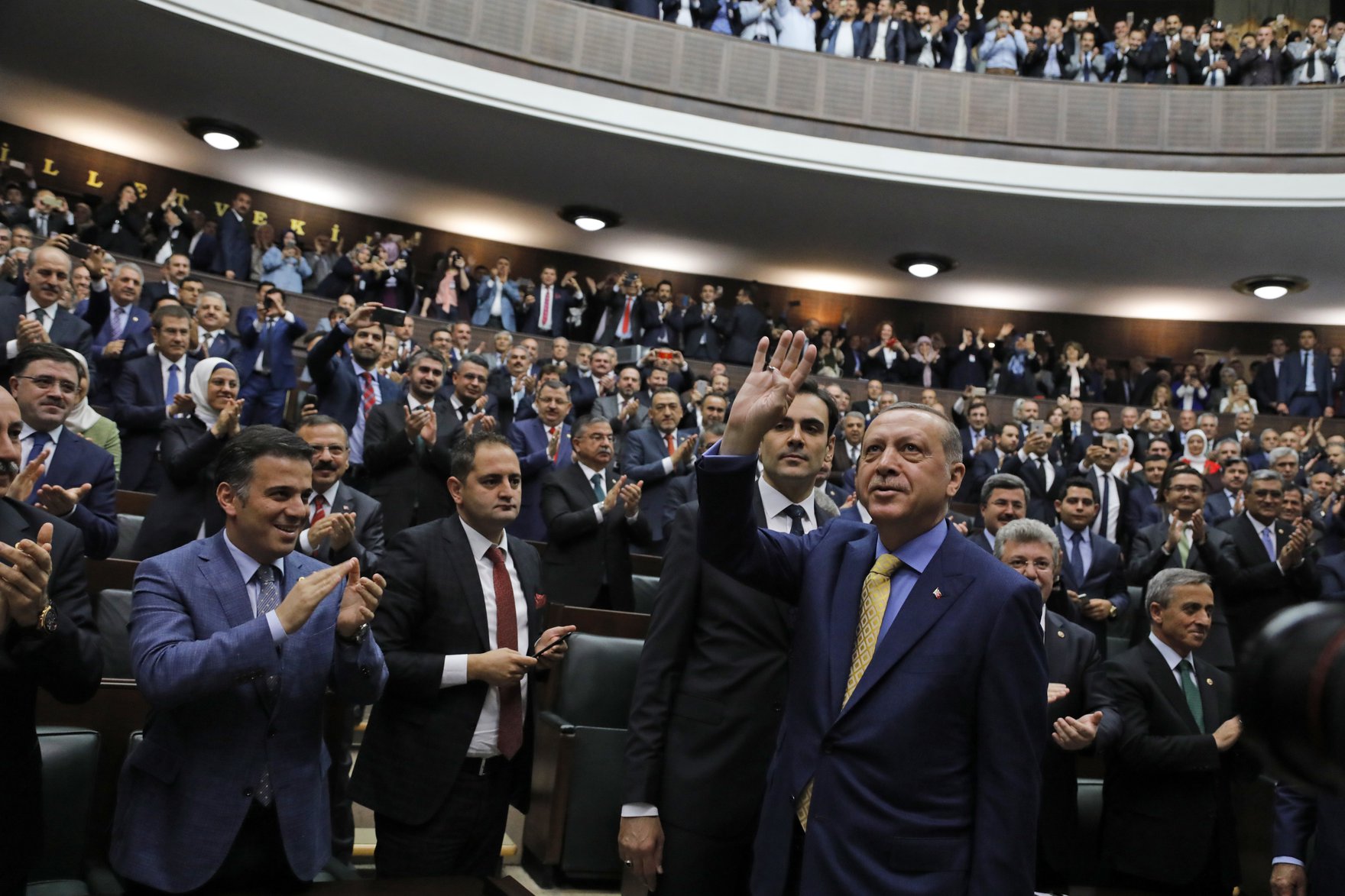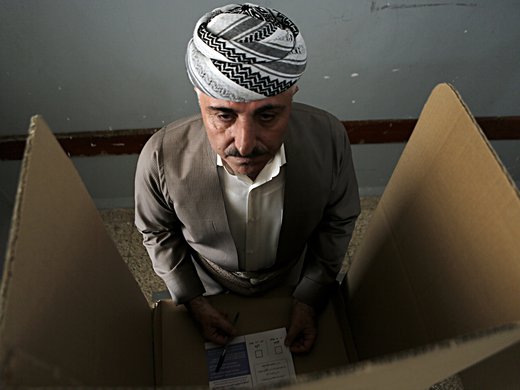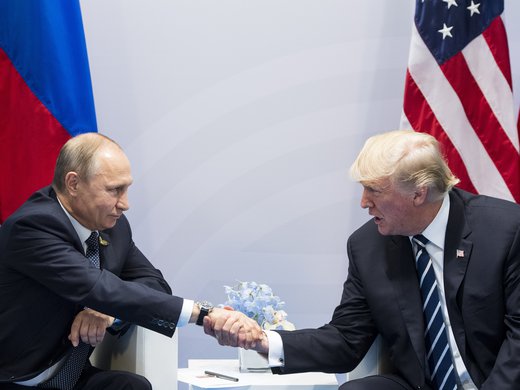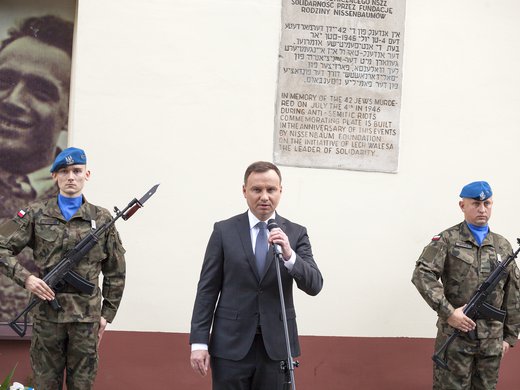The 2017 news cycle was built on grinding, slow-motion crises: tensions between North Korea and the United States, the ethnic cleansing of Rohingya Muslims in Myanmar, the daily theatre of Robert Mueller’s investigation of Donald Trump’s associates and the gradual collapse of the Islamic State in Syria and Iraq.
But these breaking headlines turned eyes away from a number of global security issues that have been festering for much longer than Trump’s presidency. Such issues — four in particular — still carry the promise of profound effects, and will surely claw their way into 2018.
1. The Slow Death of Cold War Security Arrangements
Countering allegations of collusion with the Kremlin wasn’t the only Russia-related challenge Donald Trump faced when he entered office this year. In late 2016 or early 2017 the Russian armed forces deployed a new nuclear-capable ground-launched cruise missile (GLCM) system — the SSC-8 — that violates the 1987 Intermediate-Range Nuclear Forces Treaty (INF Treaty).
The INF Treaty was arguably one of the most successful arms control treaties of the Cold War. It banned the United States and the Union of Soviet Socialist Republics (USSR) from owning nuclear and conventionally armed ground-launched ballistic and cruise missiles with ranges between 500 and 5,500 kilometres. These missiles were considered destabilizing in Europe because they could be used in a preemptive nuclear strike — their short flight times would make their launch hard to detect in time for the target to launch a retaliatory strike — which would undermine the fragile peace that nuclear deterrence brought to Cold War Europe. The INF Treaty saw the two superpowers eliminate entire classes of weapons from their arsenals, and Moscow and Washington destroyed 2,692 missiles in accordance with the pact.
Now, the United States must decide how to respond to Russia’s deployment of the SSC-8 missile system. Congress is looking at a tit-for-tat strategy the includes the development of a US-owned INF Treaty-prohibited GLCM system. While the violation or dismantling of any one arms control treaty does not necessarily constitute a catastrophe, the slow death of the 1987 treaty fits into a broader pattern of abandoning long-standing and proven Cold War/post-Cold War security arrangements (including the Budapest Memorandum, the Anti-Ballistic Missile Treaty and the Treaty on Conventional Armed Forces in Europe) in favour of more aggressive, unilateral security solutions.
2. The Growing Central American Refugee Crisis
While the world was transfixed by visceral images of Middle Eastern, African and Central Asian migrants literally dying to make their way to Europe, another refugee crisis was underway across the ocean. The Northern Triangle countries of Central America — El Salvador, Guatemala and Honduras — are some of the most violent countries in the world. For years, hundreds of thousands of Northern Triangle residents have fled for Mexico, where, in turn, they attempt to enter the United States. In 2016 alone, the US Department of Homeland Security recorded 85,000 Guatemalans, 61,000 Hondurans and 79,000 Salvadorans attempting to enter the United States. This is some 225,000 people from a combined population of only 32 million. Only Mexico sends more people to the United States on an annual basis.
The reasons that Salvadorans, Guatemalans and Hondurans flee their countries are clear. The Northern Triangle countries are key waypoints for cocaine destined for the US market. Mexican-based cartels work with local criminal organizations to move drugs through the Northern Triangle to Mexico. The effect on society is painful: cartels buy the loyalty of politicians, judges and police; disputes are settled with violence, rather than in the courts; civilians are caught between competing gangs (such as Mara Salvatrucha and Barrio 18) and vigilante groups; young men are given the choice between plata o plomo (money or bullets). Doctors Without Borders estimates that around 40 percent of those fleeing the region have either directly experienced violence or have a family member who did.
While the Northern Triangle refugee crisis is a symptom of a larger problem, its effects reverberate across the continent. Take, for example, the 2014 US border immigration crisis, when nearly 70,000 unaccompanied children arrived at the US-Mexico border. The numbers overwhelmed US customs and immigration officials, forcing them to hold children in temporary facilities on military bases. The optics were ugly and the matter quickly became a partisan issue in Washington, with Republicans blaming the situation on lax immigration enforcement and Democrats using the issue to argue for comprehensive immigration reform.
Today, relations between the United States and Mexico are strained in part due to some Americans’ belief that immigration — legal or otherwise — presents a threat to their way of life. Bad relations on one issue don’t necessarily spread to the rest of a bilateral relationship, but they don’t help, either. However, with North American Free Trade Agreement renegotiations in bad shape, and anti-immigrant attitudes finding some newfound popularity in the United States, the prospects of Washington, Mexico City and Ottawa finding a mutual solution to this refugee, drug and crime challenge seem slim. Expect the vicious cycle of drug violence, fleeing refugees and the accompanying breakdown of international cooperation to rise to the forefront as media attention shifts south for the coming Group of Twenty Summit in Buenos Aires.
3. Turkey’s Awakening as a Regional Power
Headlines spanned disputes between Washington and Ankara over the arming of Syrian Kurds, Turkish President Recep Tayyip Erdogan’s decision to position himself as the political leader of the Muslim world by challenging Donald Trump’s Jerusalem policy, Turkey’s decision to cut the United States out of Syrian peace talks by dealing directly with Russia and Iran, and Turkish claims that the United States is sheltering the mastermind of the failed July 2016 coup.
While each episode of the deteriorating relationship between Turkey and the United States — and perhaps the rest of the North Atlantic Treaty Organization (NATO) — has been well documented, the arc of the story has been largely missed.
Ultimately, US-Turkey relations are just a bilateral issue. Turkey, although never fully accepted by Europe, has been (politically) part of the “West” since the end of World War II. Turkey fought with the United Nations during the Korean War, and was a NATO stalwart throughout the Cold War. Now, under Erdogan’s leadership, the Turkish government sees its destiny not so much as a European power, but as a leader in the Muslim world, a peace broker in the Middle East and a military heavyweight that straddles East and West.
What this means in the long run is unclear. On the one hand, an invigorated and self-assured Turkey still carries the millstone of its imperial and colonial Ottoman past, which stacks the deck against the prospect of an Ankara-led Middle East. On the other, Turkey, under Erdogan’s leadership, will not be content as a second- or third-tier player. While making predictions is a mug’s game, expect Turkey to continue to negotiate the future of Syria with Russia and Iran and to use its economic, military and political muscle to foreclose on any possibility of a Kurdish state in northern Iraq and Syria — whether Washington likes it or not.
4. The Looming Struggle for Leadership in Asia
In June 2017, the Chinese People’s Liberation Army began building a road in the disputed Doklam/Donglang region along the Bhutan-China border. India, according to its 2007 Friendship Treaty with Bhutan, sent soldiers to stop China’s construction efforts. A relatively peaceful standoff ensued, which was punctuated by the occasional fist fight and brawl between Chinese and Indian soldiers.
While the standoff ended peacefully in August with both sides pulling their troops back, the bigger story is the future of Sino-Indian relations. Pundits have been predicting a full-fledged struggle for Asian supremacy between the two countries for years now — and in 2017 that argument was slowly but surely bolstered. India continued to amass allies, such as Japan and the United States, in what is increasingly looking like an informal coalition to contain Chinese influence. Meanwhile, Beijing has tried to pull long-time ally (and former Indian rival) Pakistan even closer with the formal announcement of the China-Pakistan Economic Corridor, a US$50 billion investment project aimed at building out Pakistan’s highways, railways, electricity sector and telecommunications infrastructure.
While a Cold War between the two nuclear-armed giants is not inevitable, 2017 saw both countries continue to lay the foundation for such a rivalry. With Xi Jinping now firmly ensconced as China’s Paramount Leader, expect this nascent rivalry to continue as China’s neighbours, increasingly concerned about Beijing’s regional ambitions, look to India for support.
These four international security concerns — the collapse of Cold War treaties, the ongoing human suffering in Central America, Turkey’s awakening as a regional power and the coming storm between India and China — have been years in the making, and their effects are likely to be felt for years to come. While these issues haven’t made major headlines in quite some time — or at all — they stand as an important reminder to consider global politics with depth and breadth. The flashiest stories aren’t always the most consequential.



